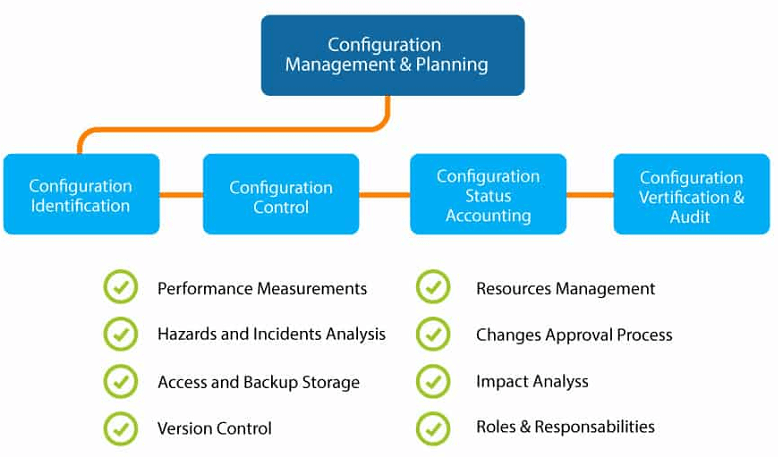Configuration ManagementSystem administrators regularly execute repetitive tasks such as server installation, server configuration, etc. By writing some scripts, they can automate this function, but when you are operating on big infrastructure, it is a very difficult job. To solve this difficulty, configuration management came into the market. Configuration management is the process of maintaining software and computer systems like networks, servers, storage in configured, desired, and consistent state. Through configuration management, we can access the exact historical record of system position for project management and audit purposes. By the help of Configuration Management, we can remove the following challenges:
Configuration Management ProcessA configuration item (CI) is an infrastructure element or any service component or any component that needs to manage in order to ensure the successful delivery of services. Configuration items such as individual documents, model plans, etc. Configuration management has different interdependent processes or activities. These activities are as follows:
Let's see these activities in details: Configuration Identification
Change ManagementIt deals with the changes either at the individual or organization level. Configuration Status AccountingIt is used to report the configuration item details such as hardware, software, firmware, etc. and all deviations from the baseline during design and development. Configuration AuditsConfiguration Audit helps in identifying the current state of the system. It is a process of reviewing the product and its expected behavior as it is supposed that it should behave as promised to the customer. The outcome information of any quality audit and testing is used along with the configuration status accounting information, and it is done to ensure that all the promised features have been delivered. 
Configuration Management ToolThere are many configuration management tools existing in the market. Some popular configuration management tools are:
Next TopicPuppet Architecture
|
 For Videos Join Our Youtube Channel: Join Now
For Videos Join Our Youtube Channel: Join Now
Feedback
- Send your Feedback to [email protected]
Help Others, Please Share










